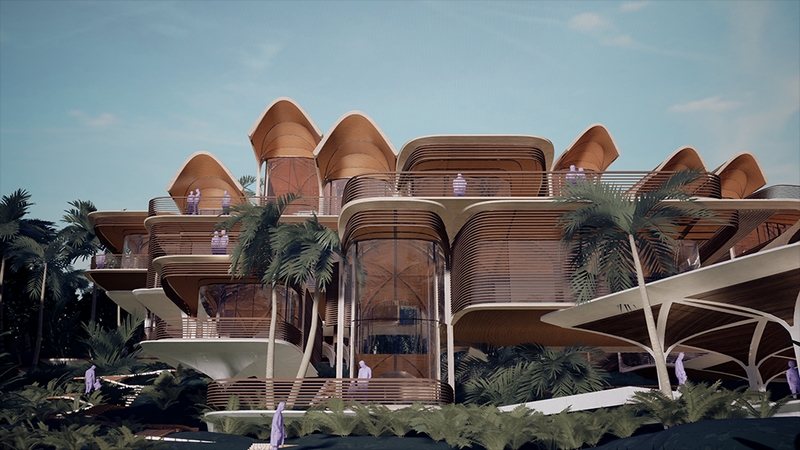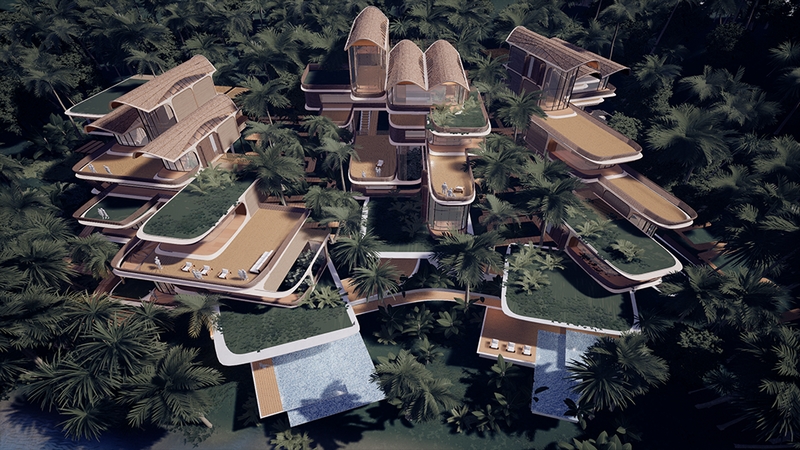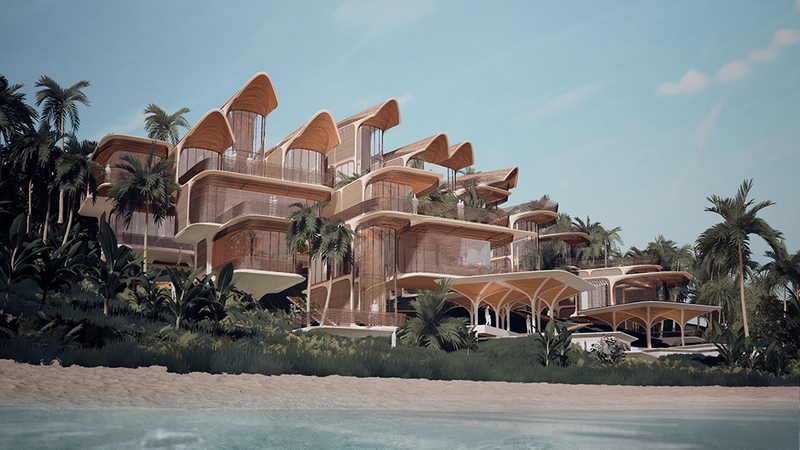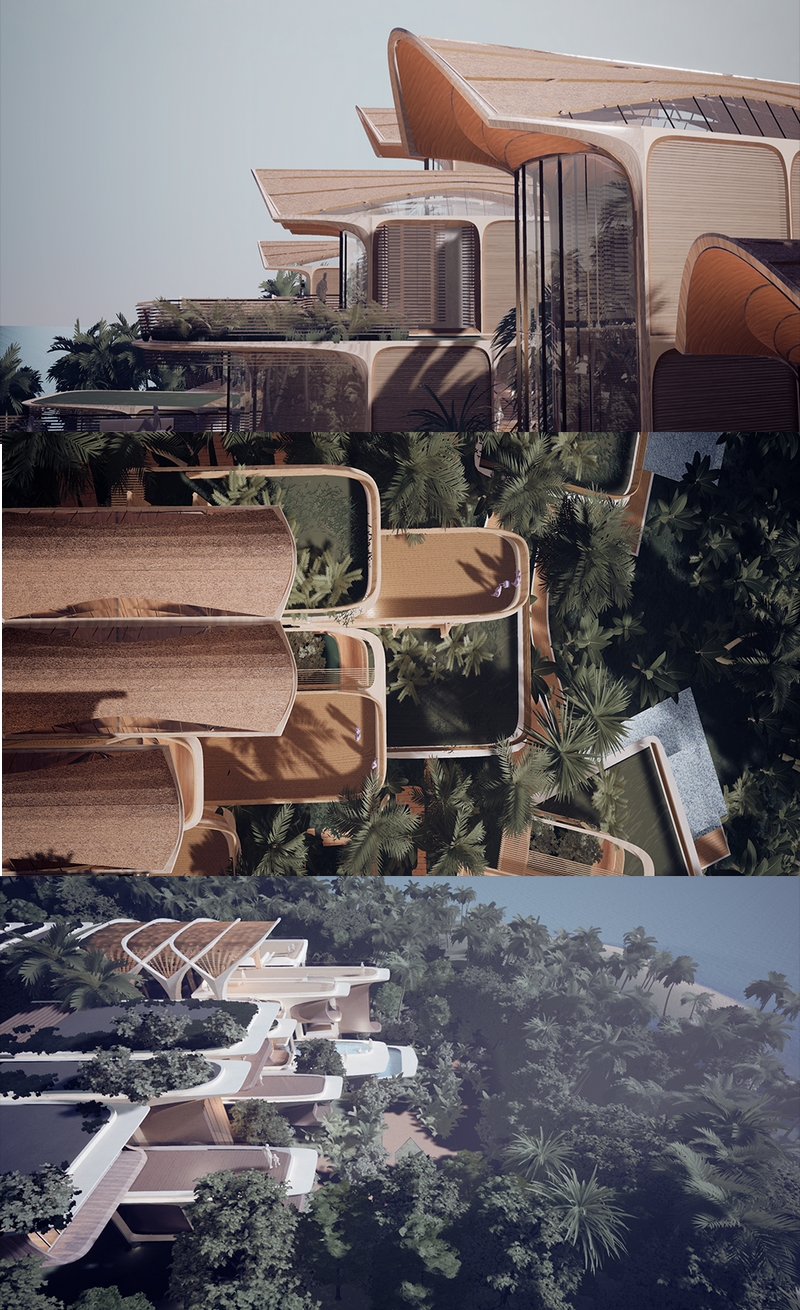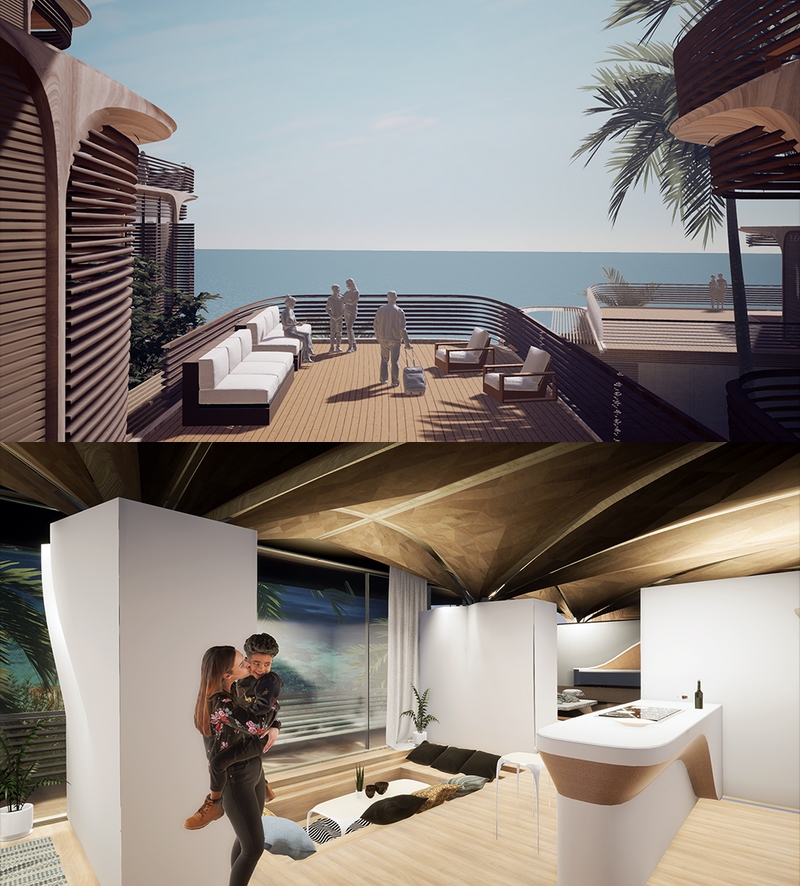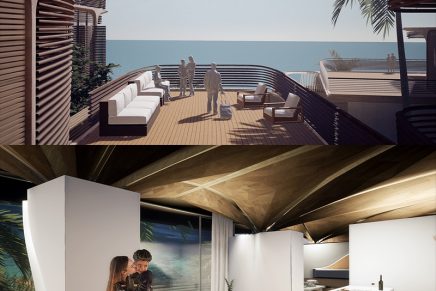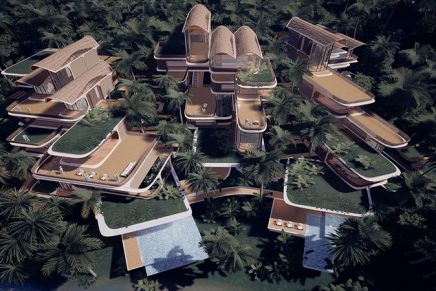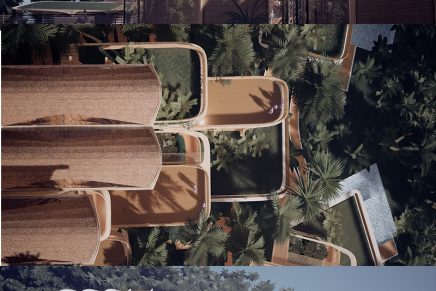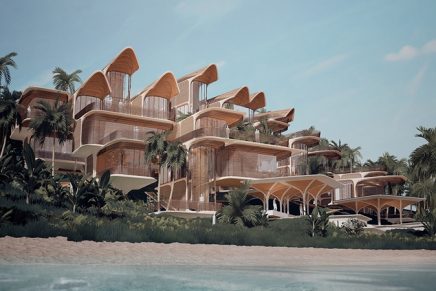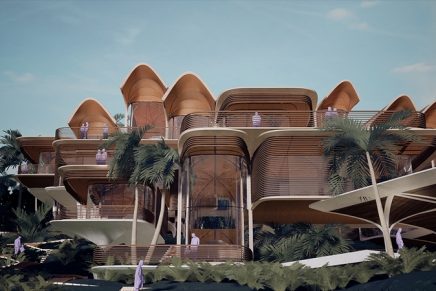Zaha Hadid Architects with AKT II and Hilson Moran unveiled remarkable new eco-friendly residences located on the island of Roatán in the Caribbean, on one of the Caribbean’s most beautiful islands. Roatán Próspera offers new opportunities for growth in Honduras to businesses and individuals. The first residential units on Roatán Próspera are a case study in local sustainability and global integration.
Designer’s Homes in Roatán Próspera: Zaha Hadid Architects is designing the first residential units in Roatán Próspera.
Zaha Hadid Architects with AKT II and Hilson Moran have developed a digital architectural platform to create homes for Roatán Próspera. The residential designs are a specific ecological and social response to the climate, terrain and culture of Roatán in the Caribbean, the largest of the Bay Islands of Honduras. These dwellings will be unique not only in the innovation of their design but in the entire construction methodology, supply chain, and integration with the local community.
The eco-designs are integrating the local vernacular tradition of timber construction, climatic appropriateness and spatial experience with new digital design, engineering and construction techniques.
Working with AKT II, the design approach starts from a comprehensive understanding of the local supply chain, logistics and construction techniques to promote the use of local materials, craftsmanship and manufacturing facilities which support the economy of the region.
The design’s modular system is founded on the use of sustainable timber, sourced nearby from certified forests on the Honduran mainlandand treated locally, to form the main structural elements. Digital information technologies will optimize the use of all parts of the sustainably-forested logs to minimize waste and pollution. This process also contributes to reducing the embedded construction energy and carbon footprint of the development.
Erick A. Brimen, CEO of Honduras Próspera LLC, explains: “The design prioritizes sustainability and is integral to our vision for Roatán Próspera. The island of Roatán is already a renowned tourist destination. Roatán Próspera will strengthen and diversify the local economy while creating homes defined by their natural environment.”
With considerable reductions in waste material, and a higher quality of construction due to the greater precision achieved by off-site fabrication, this modular system of assembly is a cost-controlled solution specifically tailored to local supply chains, transportation and installation.
The dimensions of the structure’s base timber units have been established to follow the constraints of the local transportation networks to ensure carbon emissions and logistics costs are minimised.
Divided into a ‘kit of parts’ that is quickly assembled on site, the design approach is centered around ensuring local craftsmen, tradesmen and construction teams also benefit from the knowledge and experience obtained by working with new technologies; building lasting relationships between homeowners and the local community that will help new residents to integrate with local culture. All suppliers will be given full assistance to develop their product lines to the 3D digital information model of the houses and the terrain.
For self-sufficient and net-zero carbon operations, shading canopies are optimally shaped to accommodate photovoltaic arrays for renewable power generation. Batteries will store renewable electricity for future use.
The design for manufacture and assembly (DFMA) approach has been carefully instilled into the design of the structural kit of parts, while smart timber connections allow for quick assembly and disassembly, giving the potential to reconfigure the residence or recycle any element of the modular kit.
Integrated services and insulation will be pre-assembled and installed within this structural system that performs as a robust structural frame and building envelope with enhanced thermal and acoustic performance. The configuration platform ensures adjacent units have consistent service locations to minimize on-site connection.
Applying parametric design software developed by the Computational and Design Group at ZHA (ZHCODE) and the Computational Engineering Team at AKT II, (P.ART), the platform ensures that each residence is developed specifically to the configuration defined by each homeowner. It also ensures that each home is fundamentally sustainable by using as little material and energy as possible in its construction and operation with the shapes of each element within the building being environmentally appropriate, particularly from a solar and ventilation perspective.
Particular care has been given to ensuring the designs are sustainable and feasible within the environment of Roatan; incorporating vernacular design features such as palapas and other naturally ventilated spaces, the use of locally sourced timber, passive shading, rain water collection and cooling-pools.

